Malleable, lustrous, resistant to corrosion, and high in value, gold has always been a favourite material for jewellers going back to earliest antiquity. The following jewellery pieces are all from the ancient Mediterranean and have nothing more in common than their excellent craftsmanship and striking designs. For more on the history of ancient gold see Ancient History Encyclopedia’s definition on gold in antiquity.
Gold Bead
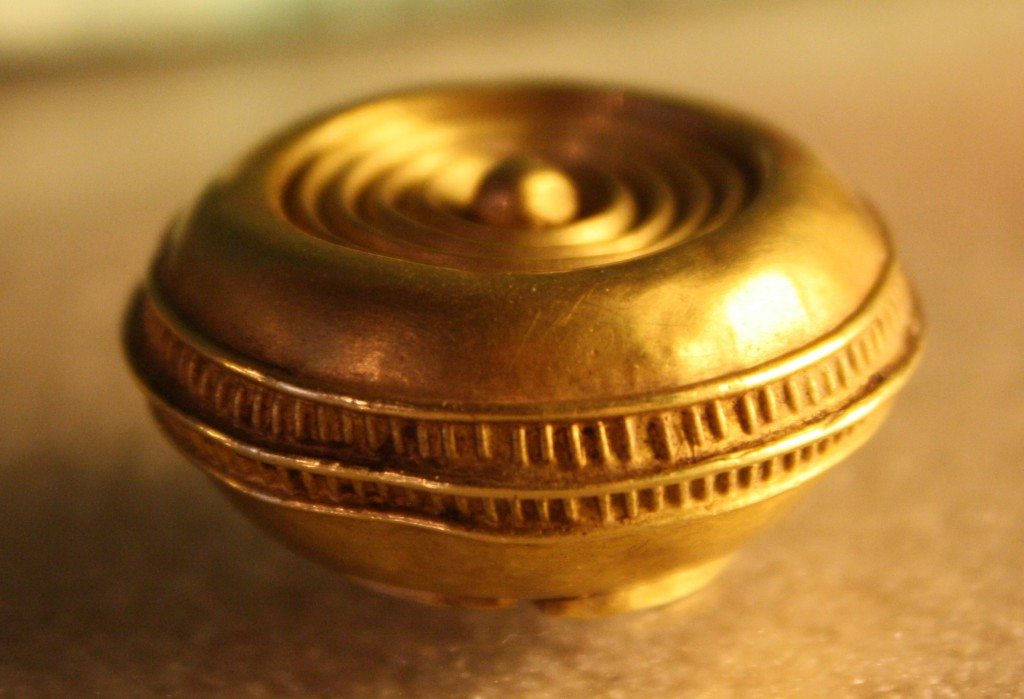
A gold bead from the dolmen d’Er Roh, La Trinite Sur Mer (France). 2200-2000 BCE. Vannes Archaeological Museum, France.
Minoan Bee Pendant
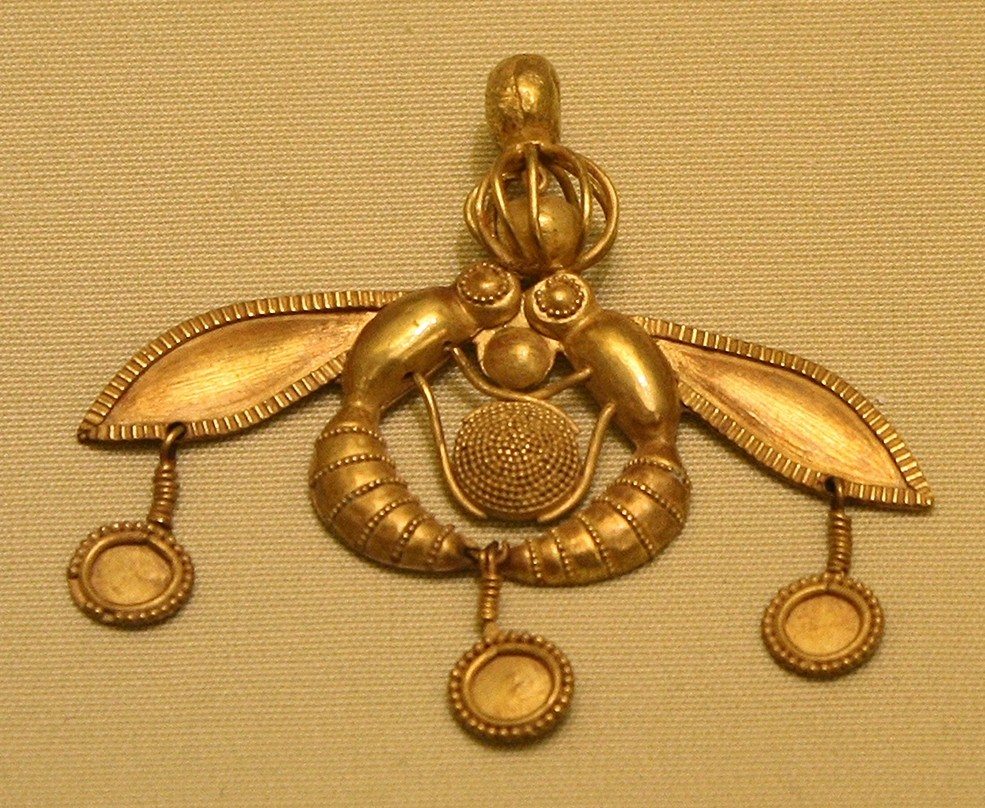
A solid gold Minoan pendant depicting two bees clutching a honeycomb (1800-1700 BCE), found in the Old Palace cemetery at Chrysolakkos near Malia, Crete. Herakleion Archaeological Museum, Crete.
Mycenaean Jewellery
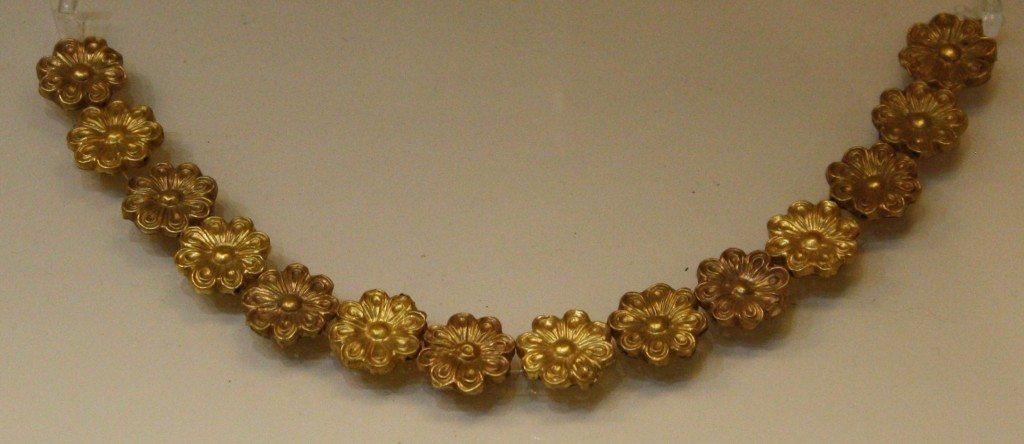
A string of gold beads in the form of rosettes from the Mycenae area (14th century BCE). Nafplio Archaeological Museum.
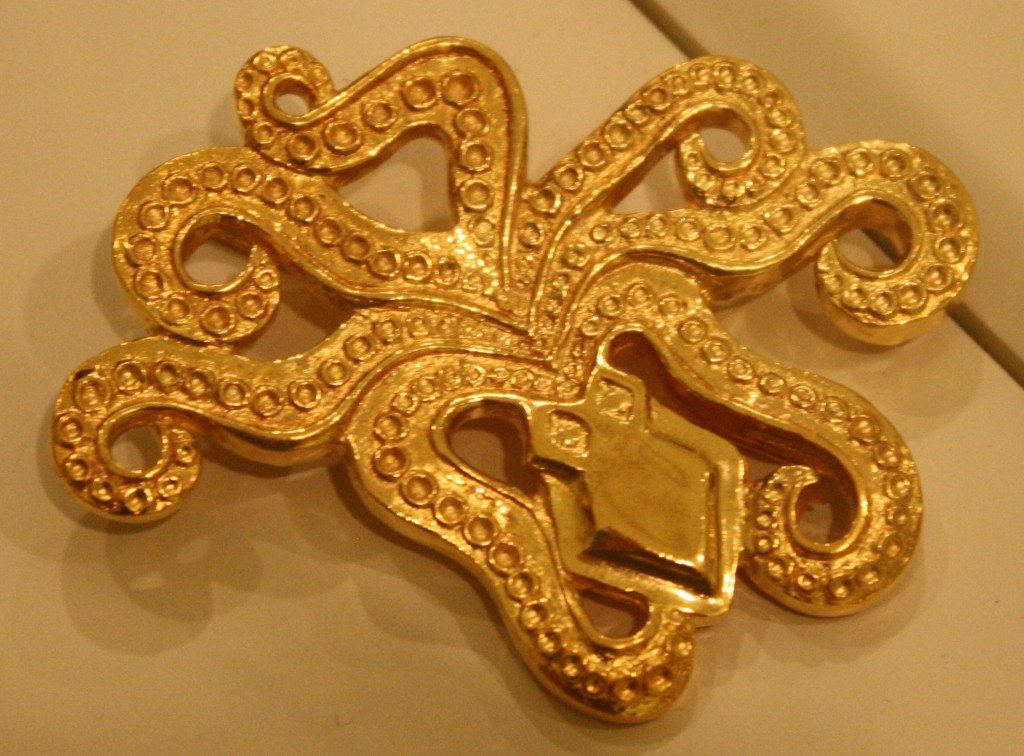
A gold Mycenaean brooch in the form of an octopus, Mycenae, mid 2nd millenium BCE. Archaeological Museum, Mycenae.
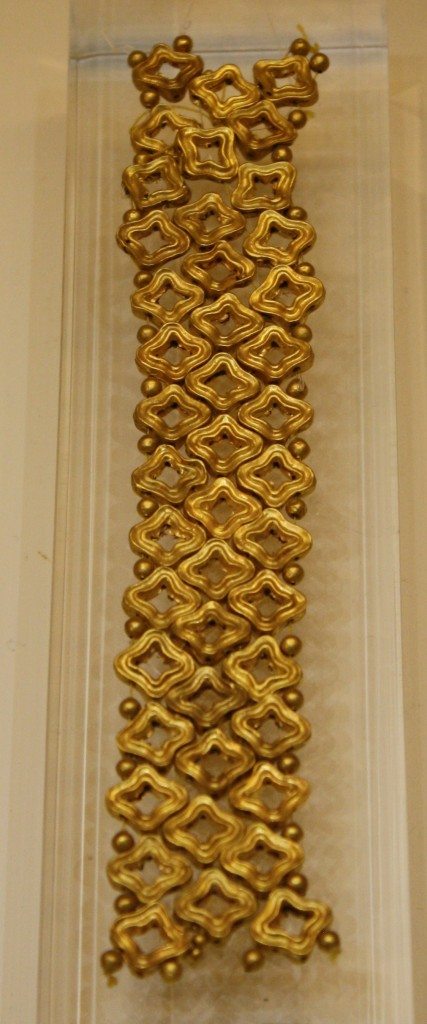
A string of gold beads (1500-1350 BCE) from Mycenae. Nafplio Archaeological Museum.
Roman Jewellery
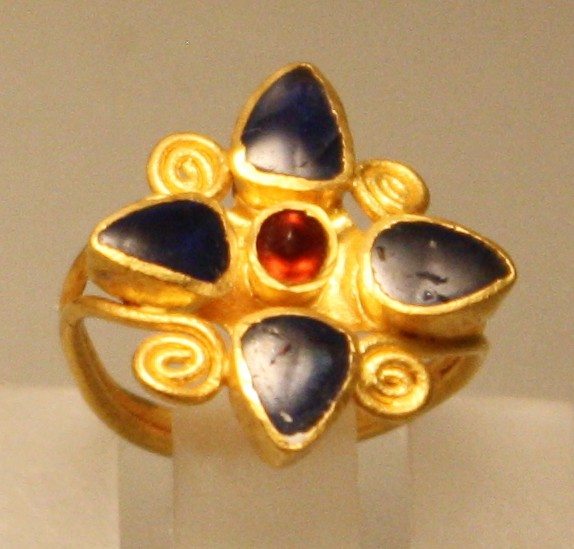
Roman gold and saphire ring, second half of the 2nd century CE. The ring has a garnet centre stone. From an unidentified marble sarcophagus in Rome. Palazzo Massimo, Rome.
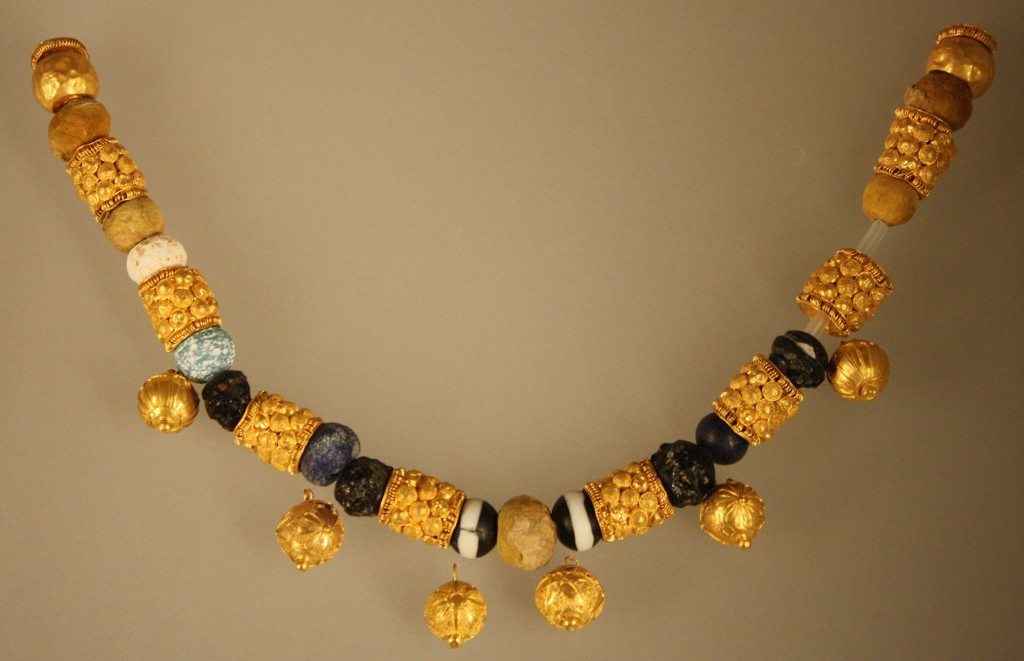
A Roman necklace in gold and glass paste, 6-5 BCE. From a sarcophagus at Fidene, Rome. Palazzo Massimo, Rome.
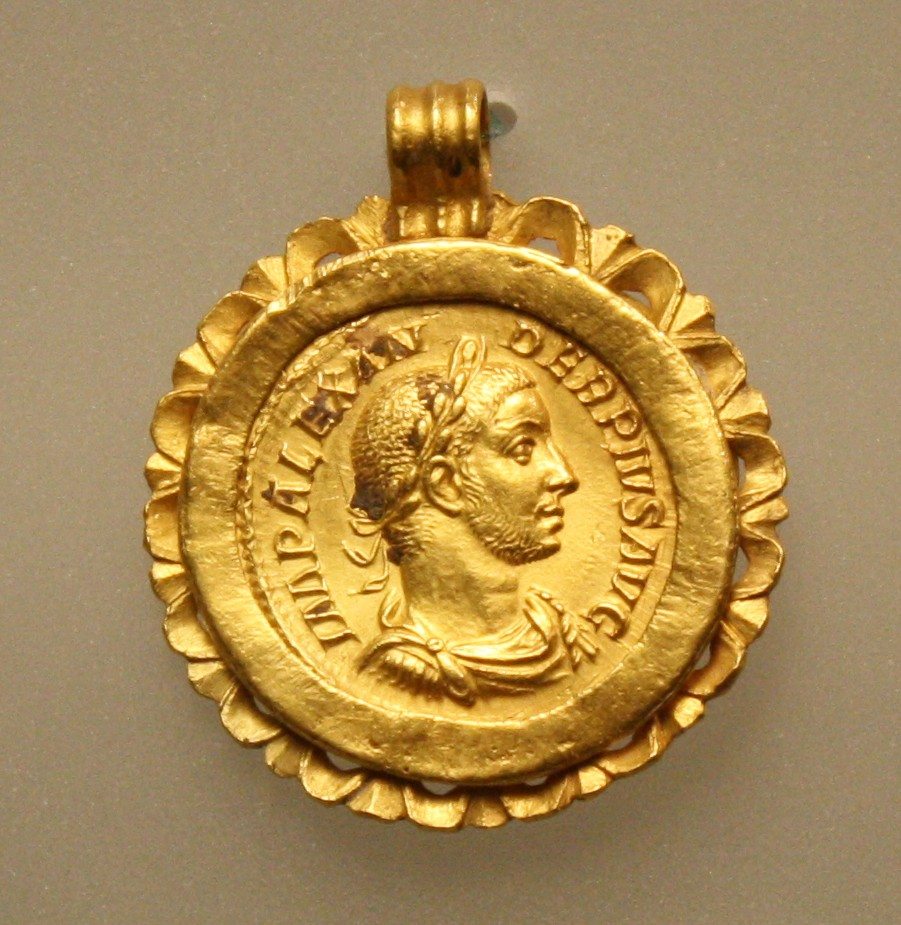
Roman gold pendant depicting emperor Severus Alexander (222-235 CE). Palazzo Massimo, Rome.
Jewellery from Agrigento, Sicily
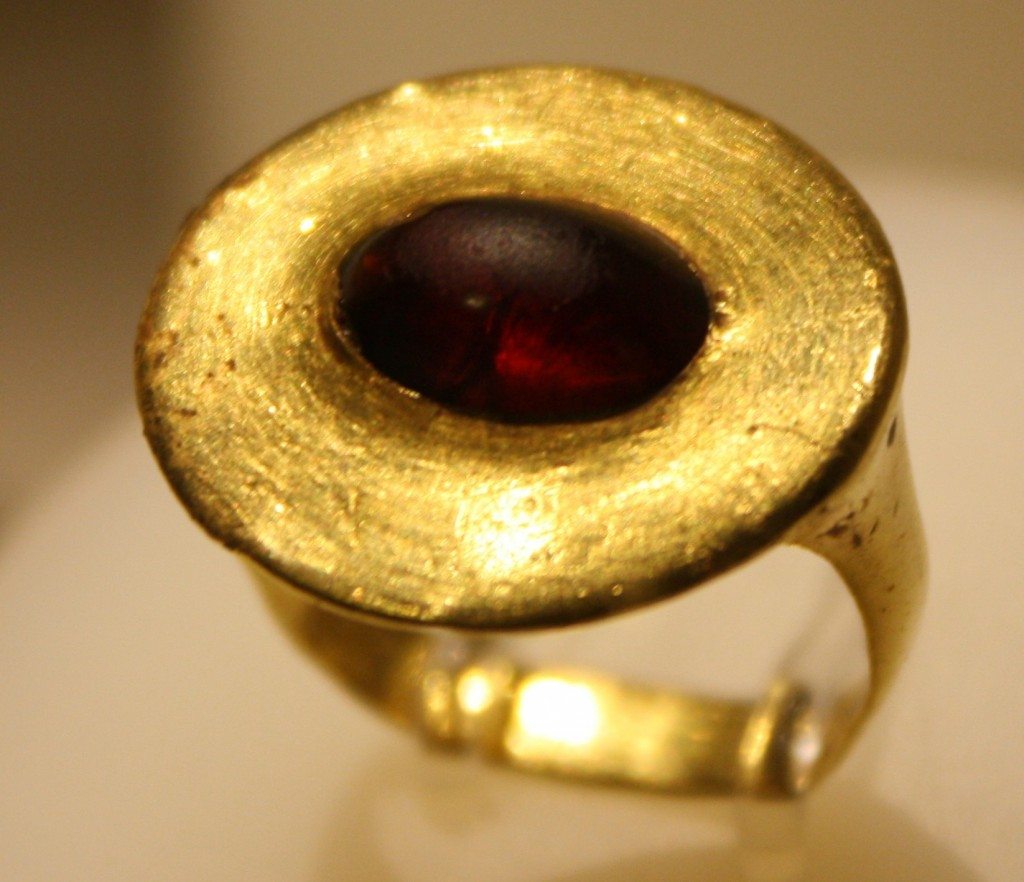
A gold and garnet ring from Agrigento, Sicily, 3rd century BCE. Archaeological Museum of Agrigento.
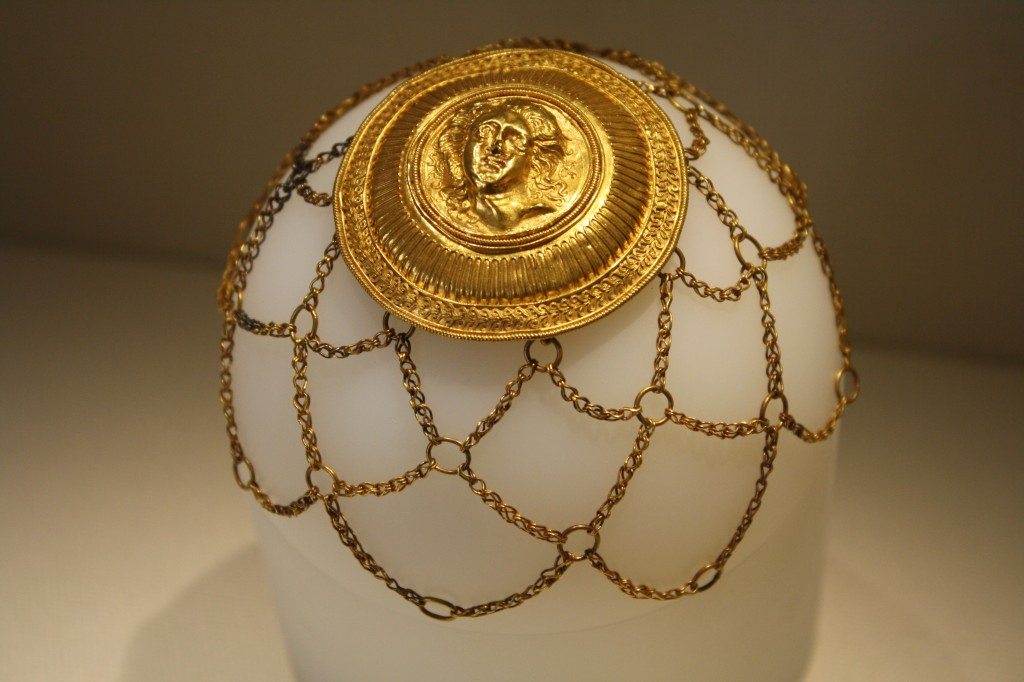
A 3rd century BCE gold hair ornament from Agrigento, Sicily. The central medallion depicts Medusa. Archaeological Museum of Agrigento.
All images were taken by the author and can be found on the Ancient History Encylopedia webiste.
